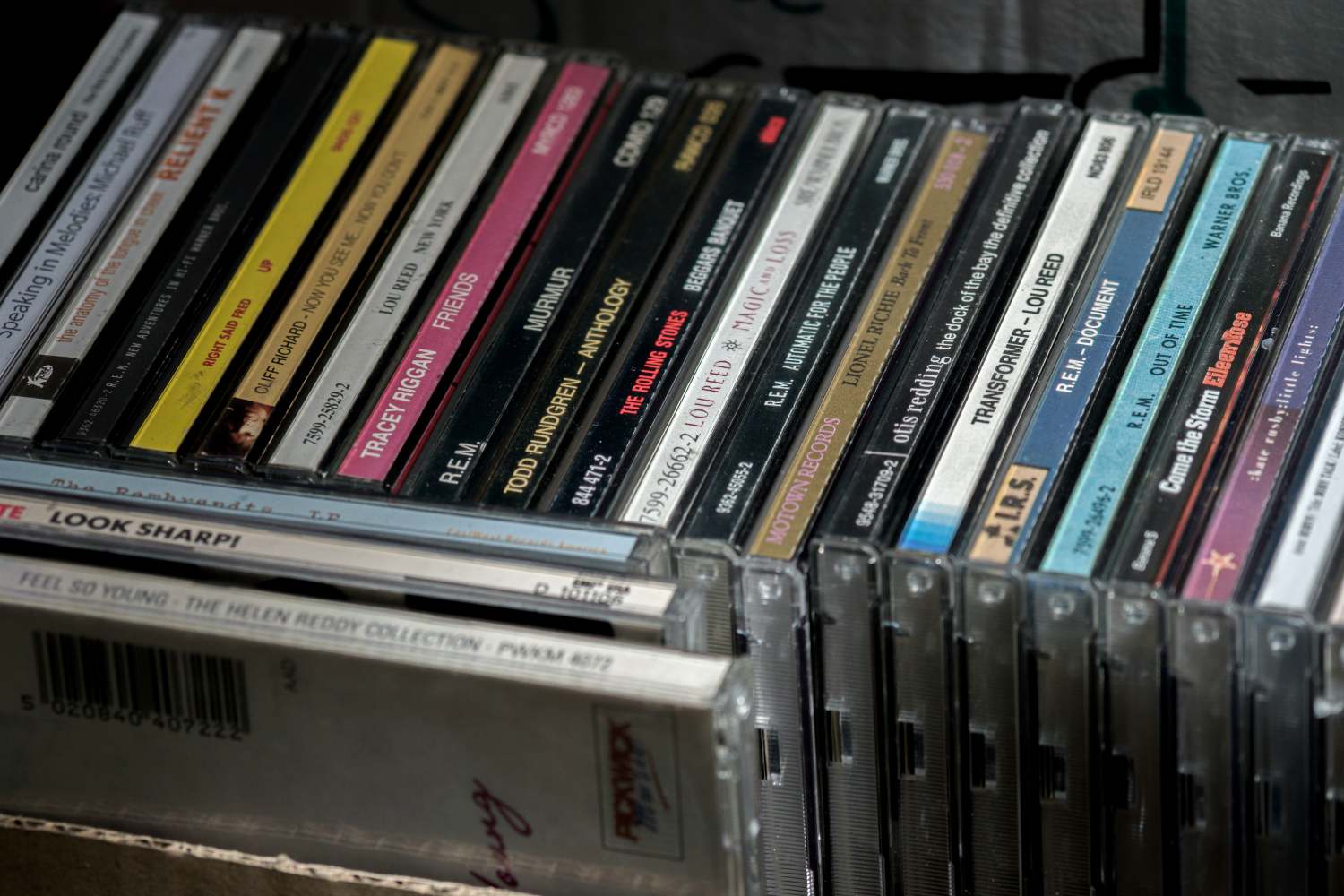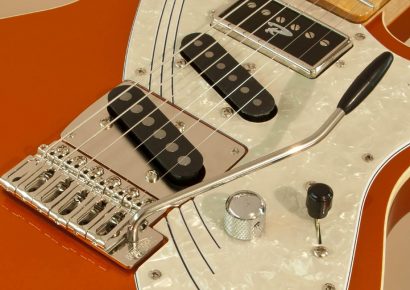What you didn't know about the CD
The invention of the Compact Disc (CD) heralded a digital era that went on to revolutionise the way music was made, distributed, and consumed.
The CD celebrates its 40th anniversary in 2022. But the concept began in the 1960s.
The story began with American physicist James Russell, who worked at General Electric’s experimental division in Richland, Washington. He designed and built the first electron beam welder and was among the first to use a colour TV screen and keyboard as the primary interface between computer and operator.
A classical music buff, he was frustrated with the way his vinyl records popped and scratched, and had inferior sound quality. He first tried improving the record player, replacing the steel stylus with a cactus needle but with no success.
It then dawned on him that the quality of the vinyl record could be retained by scrapping the stylus altogether with a light that read the music without physically touching the disc.
Dr. Russell went on to win many awards. But he got no financial rewards from his inventions because he was employed by the company.
To celebrate 40 years of the CD, we bring you 40 facts!
Read all the latest features, interviews and how-to columns here.
1. After Philips in Europe (then Royal Philips Electronics) and Sony in Japan raced to become the first to develop prototypes, in 1979 they announced they were pooling their resources.
Philips concentrated on its physical design and how the laser would read off the information.
Sony’s role was the analogue to digital conversion circuit design, encoding of the digital signals and design of the error correction code.
2. It wasn’t a harmonious relationship. Philips’ idea was for the disc to be 115mm, which was close to the size of its cassette tape.
3. Sony wanted the 120mm disc as an industry standard, knowing that Philips would have the advantage in manufacturing because it already had a factory capable of producing 11.5cm CDs.
4. It ended up being 120mm which would allow 74 minutes of music.
5. There are two versions to the 74 minute idea.
6. Sony and Philips knew that the legendary Austrian conductor Herbert Von Karajan, who sold 200 million records, was crucial in selling the new format to Europeans.
He agreed to appear at the April 15 1981 press conference in Salzburg, Vienna, where they’d present the prototype of the shiny new disc, on the condition the entire Beethoven’s Ninth Symphony could be played without interruption.
The longest recording, Wilhelm Furtwängler’s 1951 rendition, ran for 74 minutes.
7. In another version, the 1951 recording was the favourite of Sony vice president Norio Ohga (later president and chairman), an opera singer who was chair of the Tokyo Philharmonic.
It was he (or his acclaimed classical pianist wife Midori Matsubara) who wanted the 74 minutes.
8. The CD in fact launched with a capacity of 74 minutes 33 seconds, but the U-Matic master tapes used to make them only held 72 minutes. So it wasn’t until 1988 that Beethoven’s 9th fitted on a single disc.
9. Sony sold the world’s first CD in 1982 and CDs overtook LP sales in Japan five years later.
10. The specs for the CD were also used in later formats as MiniDisc and DVD.
11. A misconception is that ABBA’s The Visitors was the first album to be released on CD.
True, it was recorded on a number of formats, including digital. It was released first on vinyl and cassette in November 1981, but the CD version only came out in 1983.
12. By then 150 titles had been simultaneously released on the new format in Japan on October 1, 1982.
13. The first catalogue number of these was Billy Joel’s 52nd Street.
Others in the batch were Toto’s Turn Back, Pink Floyd’s Wish You Were Here, Michael Jackson’s Off The Wall, Santana’s Shangó, Vangelis’ Chariots of Fire soundtrack, Quarterflash’s Quarterflash, Tchaikovsky’s 1812 Overture and the Nolans’ Don’t Love Me Too Hard.
14. They hit the Japan market with Sony’s CD player CDP-101 on October 1, 1982 – chic looking but expensive at $US1,000 ($2,966 in today’s money). The CDP-101 did not reach the shores of America until the early part of 1983.
15. CDs and players came on the US, Australian, and European markets on March 2, 1983 with 16 titles from Sony label CBS.
16. By then there were 1,000 titles on the format.
17. But far-sighted Australian retailers like Canberra’s Kent Hi-Fi had figured out CDs were the future, and began importing from Japan by 1982.
18. The first US release, in 1984 was Bruce Springsteen’s Born In The USA.
19. CD booklets warned that the discs needed protection from dust, fingerprints, and scratches. But they gained a reputation of indestructibility.
20. BBC-TV’s Tomorrow’s World wondered if there was a market for it and tested its resilience by scraping and scratching a Bee Gees CD. Urban legend was the presenters smeared the disc with strawberry jam but that was denied.
21. The CD format was initially embraced by audiophile and classical consumers. As players dropped in price, demand became mainstream.
22. In 1988, 400 million CDs were made by 50 pressing plants around the world.
23. By that year, they eclipsed vinyl, overtaking the cassette three years later. In 2007, 200 billion CDs were sold.
24. What sold the format was Dire Straits’ Brothers In Arms (May 1985), made at AIR Studios in the Caribbean island of Montserrat.
“It was pretty torturous,” co-producer Neil Dorfsman told Sound on Sound about the cramped size of the main room. But its Neve console “was so good that anything you put through it just sounded great.”
25. Dorfsman reveals the digital multitrack was mixed on an analogue board with the resulting two track mix re-digitised via a Prism A/D converter and recorded on a DAT machine.
26. Brothers In Arms was the first CD to sell a million. It went on to hit 30 million worldwide.
27. In Australia, it remains the longest stayer at #1 (34 weeks) on the ARIA chart and was certified 17x platinum for sales of 1.24 million.
28. Overwhelming demand at manufacturing plants around the world for Brothers In Arms was a nightmare for Rykodisc, which had just launched as the first CD-only record label.
29. The first Aussie-made CD was Whispering Jack (1986) by John Farnham through Disctronics in Melbourne.
30. But the first Australian CD to be released to the market was Andrew Thomas Wilson’s electronic ambient Carnavon, made at Studios 301 in Sydney in mid-1984 and manufactured in Japan for Australian issue on October 20, 1984.
31. Disctronics was Australia’s first CD plant, opening in February 1987 with 80 per cent of its clients initially coming from Europe and the US
32. The first major artist to have his full back catalogue out on CD was David Bowie, with 15 albums made available in February 1985.
33. The biggest selling CD (not the biggest selling title) is Beatles 1, released in November 2000, with worldwide sales of 30 million discs.
34. By 1987, CDs had overtaken vinyl in the shops and toppled cassettes by 1991.
35. The CD met traditional computing tech in 1991 with the CD-i, designed to hold video, lyrics, animations, and other interactive content. Within a year, 50 titles were available on CD-i.
36. The Video CD in 1994 was pitched by co-founder Sony to record and play back concerts, karaoke, and interactive stuff for children.
37. But it was quickly superseded by the Digital Versatile Disc (DVD) – invented by Philips, Sony, Toshiba, and Panasonic – which put the VHS tape on the scrapheap.
38. The first rewritable CD — the CD-RW — hit the market in 1997 but was affected by its high price.
39. The end came for the CD from 2000 after the introduction of a new format called MP3, and the concept of buying, storing, and playing the music on the consumer’s personal computer.
Almost 300,000 tracks sold in the first 24 hours of the service, with Apple marketing single-track MP3s for $0.99, and albums for $9.99.
By 2017/18 streaming overtook CD sales globally.
40. According to the Australia Recording Industry Association, CD album sales in Australia went from 8,359,548 in 2017 to 5,892,665 in 2018 to 3,794,171 in 2019 to 3,291,332 in 2020, to 2,293,671 in 2021.
Find out more on how CDs work here.







